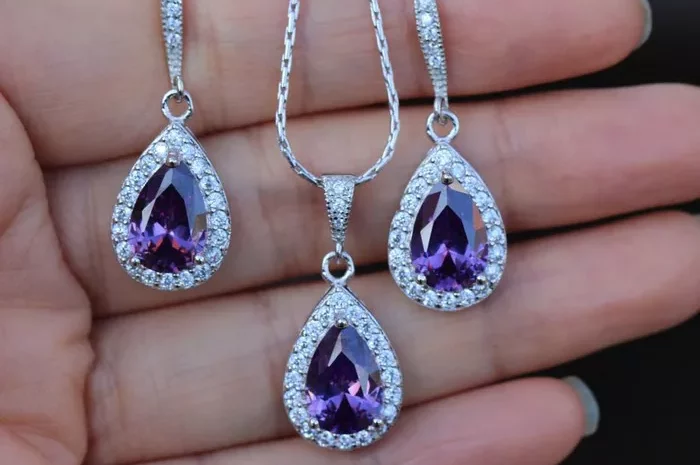Amethyst, a variety of quartz, is renowned for its vibrant purple hue and enchanting beauty. It has been cherished for centuries for its mystical properties and aesthetic appeal. In the realm of jewelry and gemstone appreciation, amethyst grinding stones play a crucial role in shaping and polishing this semi-precious gemstone to bring out its full potential. This article aims to provide a detailed introduction to choosing an amethyst grinding stone, covering aspects such as material, grit size, hardness, and usage, in a logical and popular science style.
Understanding Amethyst
Amethyst is a type of quartz crystal that exhibits a rich purple color due to trace amounts of iron and other impurities within its crystalline structure. It is a semi-precious gemstone that is found naturally in various locations around the world, including Brazil, Uruguay, Madagascar, and parts of the United States. Amethyst is valued not only for its striking appearance but also for its supposed metaphysical properties, such as promoting calmness and reducing stress.
Importance of Grinding Stones
In the process of shaping and polishing gemstones, grinding stones are indispensable tools. They are used to grind, shape, and polish the rough surfaces of gemstones, revealing their inner beauty and brilliance. For amethyst, the choice of grinding stone is particularly crucial as it can significantly impact the final appearance and quality of the gemstone.
Factors to Consider When Choosing Amethyst Grinding Stones
Material
The material of the grinding stone is a fundamental consideration. Common materials for grinding stones include silicon carbide, aluminum oxide, and diamond. Each material has its unique properties and suitability for different types of gemstones.
Silicon Carbide (SiC): SiC grinding stones are hard and durable, making them suitable for grinding harder gemstones like sapphire and ruby. For amethyst, SiC stones can be used for heavier grinding tasks, but they may require more caution to avoid scratching the softer purple crystal.
Aluminum Oxide (Al2O3): Aluminum oxide grinding stones are softer than SiC and are often used for finer grinding and polishing tasks. They are well-suited for amethyst as they can provide a smoother finish without excessively damaging the gemstone’s surface.
Diamond: Diamond grinding stones are the hardest and most durable of the three, making them suitable for grinding the hardest gemstones, such as diamonds themselves. However, for amethyst, diamonds may be too aggressive and are generally not recommended unless working on a very stubborn imperfection.
Grit Size
Grit size refers to the size of the abrasive particles on the grinding stone’s surface. The grit size determines the aggressiveness of the grinding action and the final smoothness of the gemstone.
Coarse Grit: Coarse grit stones are used for initial shaping and heavy grinding, removing large amounts of material quickly. For amethyst, coarse grit stones can be used to flatten and shape the gemstone, but they should be used with caution to avoid damaging the gemstone’s internal structure.
Medium Grit: Medium grit stones are used for intermediate grinding, refining the shape and removing smaller imperfections. They provide a balance between aggression and smoothness, making them ideal for refining amethyst’s surface.
Fine Grit: Fine grit stones are used for the final polishing stage, achieving a smooth, glassy finish. For amethyst, fine grit stones are crucial for bringing out the gemstone’s natural beauty and brilliance.
Hardness
The hardness of the grinding stone is another important factor. A grinding stone that is too hard can scratch or damage the gemstone, while one that is too soft may not be effective in removing imperfections. The hardness of the grinding stone should be matched to the hardness of the gemstone being worked on.
Soft Stones: For softer gemstones like amethyst, softer grinding stones (such as those made of aluminum oxide) are generally preferred. They provide a smoother grinding action and are less likely to scratch the gemstone’s surface.
Hard Stones: For harder gemstones, harder grinding stones (such as those made of silicon carbide) are more suitable. They can effectively remove material and shape the gemstone, but require more care when used on softer gemstones like amethyst.
Usage
The intended use of the grinding stone also affects the choice. Grinding stones can be used for various tasks, including shaping, grinding, and polishing. The specific needs of the task will determine the type and grit size of the grinding stone required.
Shaping: For shaping amethyst, coarse grit stones are typically used to quickly remove material and establish the desired form.
Grinding: Medium grit stones are used for refining the shape and removing smaller imperfections, providing a smoother surface for the final polishing stage.
Polishing: Fine grit stones are crucial for the final polishing stage, achieving a smooth, glassy finish that brings out the gemstone’s natural beauty.
Practical Tips for Using Amethyst Grinding Stones
Proper Technique: Using the correct technique is crucial when working with grinding stones. Apply gentle, even pressure to avoid scratching or damaging the gemstone.
Lubrication: Using water or a gemstone-safe lubricant can help reduce friction and heat build-up, protecting the gemstone from damage.
Regular Inspection: Regularly inspect the gemstone and grinding stone for signs of wear or damage. Replace worn-out grinding stones promptly to maintain optimal performance.
Safety Precautions: Always wear appropriate safety gear, such as gloves and eye protection, when working with grinding stones.
Conclusion
Choosing the right amethyst grinding stone requires careful consideration of material, grit size, hardness, and usage. By selecting a grinding stone that matches the specific needs of the task and using it with the correct technique and safety precautions, you can achieve a beautiful, polished amethyst gemstone that showcases its natural beauty and brilliance. Whether you are a professional gemstone cutter or a hobbyist, understanding these factors will help you choose and use the best grinding stone for your amethyst projects.
Related topic:
- Amethyst Spirit Crystal: What Sets It Apart from Regular Amethyst
- Amethyst Hexagonal Crystal: How Its Shape Affects Its Energy
- How Is Amethyst Rock Formed?


